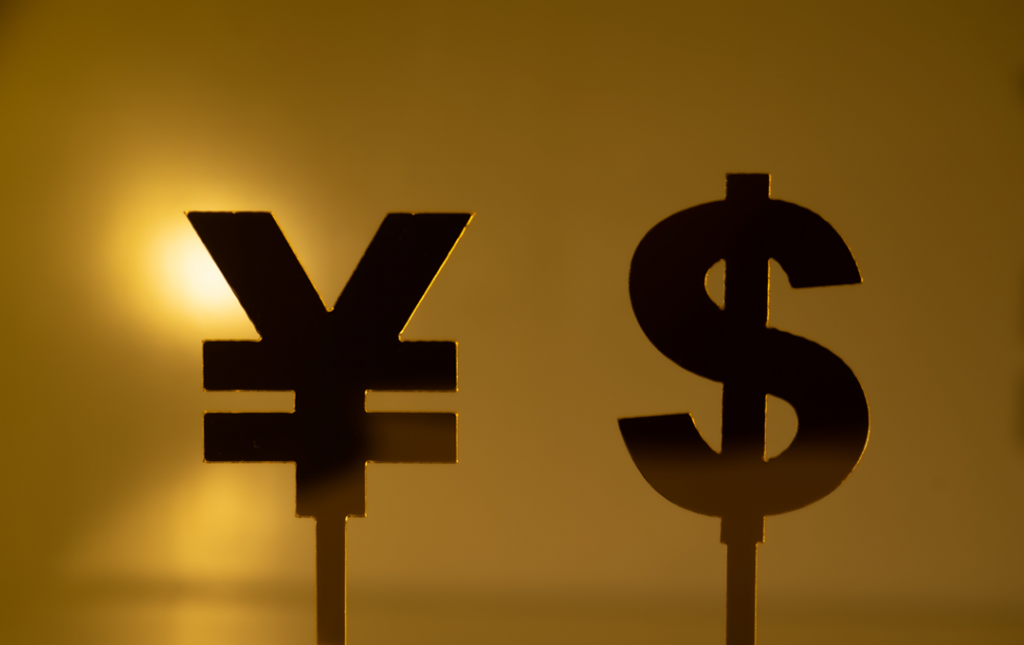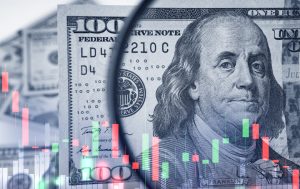The U.S. dollar has fallen to a more than one-year low against the Japanese yen as speculation mounts that the Federal Reserve may deliver an aggressive interest rate cut in its upcoming policy meeting. Traders are betting on a 50-basis-point rate cut, which would mark the beginning of a potential easing cycle from the Fed aimed at supporting the slowing U.S. economy. This speculation, coupled with other central bank moves worldwide, has caused significant shifts in the forex market.
Key Developments:
- Fed Poised to Begin Cutting Rates
- Markets are pricing in a 61% chance of a 50-basis-point rate cut by the Fed at its September meeting, up sharply from last week’s odds of 15%.
- The U.S. dollar fell as low as 139.58 yen, its weakest level since July 2023, as traders expect the Fed to initiate the first of several rate cuts.
- The dollar index (DXY), which tracks the greenback against a basket of six other major currencies, also weakened, falling 0.29% to 100.73.
- The bond market has reacted strongly, with U.S. Treasury yields falling sharply in anticipation of the Fed’s dovish turn. Benchmark 10-year yields have dropped 30 basis points over two weeks, while two-year yields have also declined.
- Impact on Major Currencies
- USD/JPY: The U.S. dollar fell to a more than one-year low against the Japanese yen, trading at 140.69 yen after dipping to 139.58 earlier in Asian trading. The yen has room to rally further, as the Bank of Japan (BoJ) is expected to maintain its hawkish stance while the Fed turns dovish. A sustained break below 140.00 could open the door to deeper declines, potentially targeting the low of 127.21 from January.
- EUR/USD: The euro rallied against the dollar, reaching $1.1123 on Tuesday, as the weaker greenback fueled gains in European currencies. The European Central Bank (ECB) recently cut rates by 25 basis points, but ECB President Christine Lagarde indicated that further cuts would not be rushed. The euro could continue to climb if the Fed confirms a more aggressive easing cycle.
- GBP/USD: Sterling remains one of the top-performing G10 currencies, rising 0.64% to $1.3206. The Bank of England (BoE) is expected to hold its key rate at 5% on Thursday, following its initial rate cut in August. However, there is still a 35.9% chance of another 25-basis-point cut this week. Sterling’s strength reflects resilience in the UK economy and persistent inflation, supporting the BoE’s cautious easing approach.
- Broader Forex Market Moves
- The Australian dollar (AUD/USD) and New Zealand dollar (NZD/USD) also rallied on Monday, with the Aussie trading at $0.6750 and the kiwi at $0.6192. Despite concerns over China’s sluggish economy, both currencies benefitted from rising expectations of U.S. rate cuts.
- The Chinese yuan (USDCNH) remained firm in offshore trading at 7.1000, as Chinese markets were closed for the mid-autumn festival. However, traders continue to monitor developments in the Chinese economy, which could have spillover effects on the global forex market.
Federal Reserve’s Rate Cut: Implications for Markets
As the Fed gears up for what could be an aggressive start to its easing cycle, the market is closely watching how this will affect U.S. economic conditions, stock performance, bond yields, and the broader dollar trajectory. A 50-basis-point rate cut would signal the Fed’s commitment to addressing signs of economic weakness, particularly in the labor market, and curbing a potential recession.
- U.S. Stock Market Reaction
- Historically, the S&P 500 has shown mixed reactions to the first rate cut in a cycle. If the U.S. economy avoids a recession, stocks tend to perform well. In fact, the S&P 500 has gained an average of 14% in non-recessionary rate-cutting cycles. However, during recessionary periods, the index typically falls by 4% in the six months following the first cut.
- Currently, the S&P 500 is up 18% in 2024, with investors hoping that an aggressive rate cut could sustain the rally, especially if the economy avoids a downturn.
- Bond Market and Treasuries
- U.S. Treasuries have traditionally been a safe haven during economic uncertainty, with yields typically falling as the Fed eases policy. However, this time, Treasuries have already seen a significant rally, and further gains may depend on whether the U.S. experiences a “hard landing” (recession) or a “soft landing” (mild slowdown).
- Benchmark 10-year Treasury yields have fallen by 20 basis points in 2024, and analysts expect further declines if a recession materializes. In a soft landing scenario, the rally in Treasuries may be more muted.
- U.S. Dollar Outlook
- The U.S. dollar’s performance will depend heavily on how the Fed’s rate cuts compare to the actions of other global central banks. Historically, the dollar tends to strengthen when the Fed cuts rates in tandem with other central banks. However, if the Fed cuts more aggressively than its peers, as many analysts expect, the dollar could weaken further.
- If the U.S. economy avoids a recession, the dollar could regain strength over time, especially if U.S. growth remains stronger than that of other major economies.
Bank of Japan and Global Central Banks
While the Fed prepares to lower rates, the Bank of Japan (BoJ) is expected to keep its policy rate steady at 0.25% at its meeting on Friday. However, BoJ board members have signaled that further interest rate hikes are coming, potentially at the October meeting. The yen has room to strengthen further, especially as Japanese authorities remain committed to reducing the rate gap between Japan and other major currencies.
Elsewhere, the Bank of England is expected to hold rates steady this week, but markets are pricing in additional cuts over the coming months. The European Central Bank cut rates by 25 basis points last week, but further easing is unlikely until December as the ECB waits for more data to assess the risk of easing too quickly.
Conclusion: Eyes on the Fed
The Fed’s decision on Wednesday will be pivotal for global markets. The possibility of a 50-basis-point rate cut has increased dramatically, and the outcome could set the tone for the rest of the year. For now, the U.S. dollar is under pressure, and further weakness is expected if the Fed takes a more aggressive dovish turn. However, how the dollar performs will also depend on whether the U.S. economy avoids a recession and how other central banks react to the changing economic environment.
In the meantime, expect heightened volatility in the forex, bond, and stock markets as investors adjust to the potential start of a significant rate-cutting cycle by the Fed.
Stay tuned for updates following the Fed’s September policy meeting and how it shapes the trajectory for markets and the U.S. dollar.
This analysis provides a detailed view of the current market conditions, highlighting how the potential rate cuts will impact the U.S. dollar, other major currencies, and broader financial markets. Keep an eye on economic data and central bank moves for further direction.



